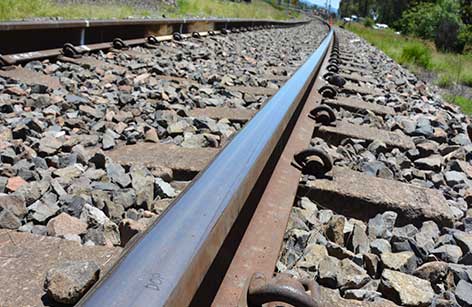The derailment of an empty coal train despite temporary speed restrictions being in place highlights how track defects can deteriorate faster than expected, a new ATSB investigation notes.

The incident occurred at Denman, NSW, as an empty Pacific National coal train was travelling from Kooragang Coal Terminal at Newcastle to Wilpinjong Colliery, near Mudgee. The train consisted of three 90-class locomotives and 92 coal wagons, with a total mass of 2,099 tonnes (not including the locomotives), and a total length of 1,510 m. It had slowed to comply with a 20km/h temporary speed restriction (TSR) put in place a week earlier after a routine track inspection had identified track geometry defects, including a long twist defect
Despite the application of the 20km/h temporary speed restriction, the long twist defect deteriorated faster than anticipated to a point where the left-hand wheels of the lead bogie of the 64th wagon behind the locomotives mounted the rail. The left hand wheels then tracked across the railhead for 10 m before dropping off the rail. The right hand wheels of the lead bogie also dropped off the rail into the four-foot (area between the rails). As the wheels ran in a derailed state, they impacted the track fastenings and the foot of the rail. A number of rail-welded joints, sleepers and fasteners were damaged by the derailed wheels, while the Up rail suffered a full cross-section break at a weld joint.
Track defects may deteriorate faster than expected.
The rail break also broke the track circuit, which triggered a signal failure.
All the wheels of the lead bogie ran in a derailed state for approximately 690 m before striking the steel road plate of a level crossing and re-railing.
The train crew were unaware of the incident until they were notified by a network controller after a signal electrician, sent to investigate the signal failure, advised of track damage at that location. The train stopped approximately 71 km away from the derailment site.
After the earlier routine hi-rail inspection had identified the track issues, repairs to the defects had been scheduled for the day after the incident occurred. While the temporary speed restrictions had been put in place, issues with drainage and existing formation defects may have caused the long twist defect to deteriorate more quickly than anticipated.
The ATSB’s safety message from this investigation is that track defects may deteriorate faster than expected. Factors that can contribute to rapid deterioration should be considered when developing maintenance responses.
Read the report: Derailment of freight train WG713, at Denman, New South Wales, on 19 January 2016


